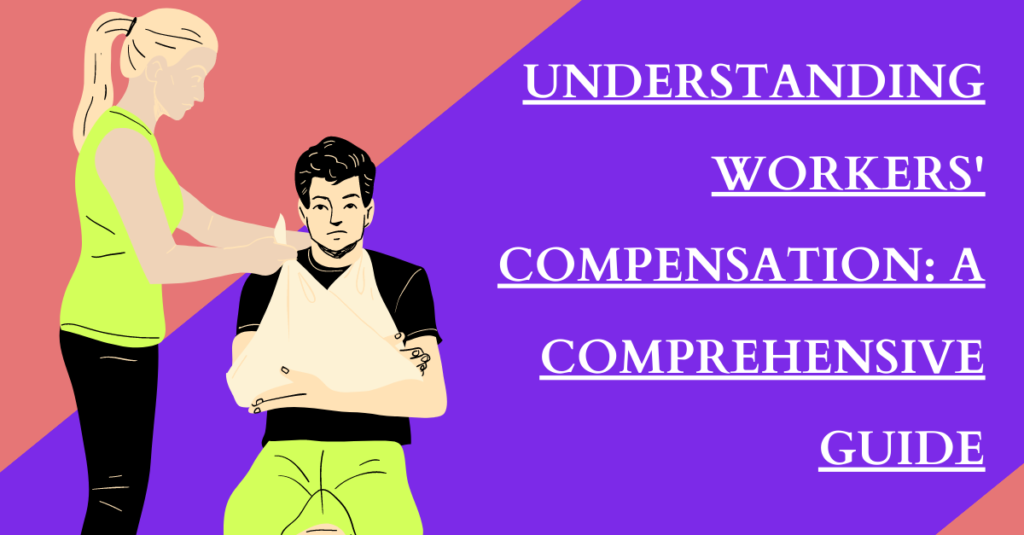Understanding Workers’ Compensation: A Comprehensive Guide
Introduction
Welcome to “Understanding Workers’ Compensation: A Comprehensive Guide.” Workplaces can be unpredictable, and in the event of accidents or injuries, having a safety net becomes crucial. This guide is designed to provide a clear and concise overview of workers’ compensation, offering a deep understanding of its importance and mechanics. Workers’ compensation is a system that ensures employees are protected with financial aid and medical assistance if they get injured or fall ill while performing their duties. Through this guide, we will navigate the fundamentals of workers’ compensation, including its historical context, eligibility criteria, benefits, and the steps involved in filing a claim. Whether you’re an employee, an employer, or simply seeking knowledge on this topic, join us in unraveling the nuances of workers’ compensation and how it contributes to a secure work environment.
The Essence of Workers’ Compensation
At its core, workers’ compensation is a system that safeguards the interests of both employees and employers in the face of workplace injuries or illnesses. It serves as a mutually beneficial arrangement, where employees receive financial assistance and medical care for injuries sustained while on the job, and employers are protected from potential legal actions resulting from these incidents. This arrangement not only helps injured employees recover and return to work but also ensures that employers maintain a safe and secure work environment.
A Brief Historical Perspective
The concept of workers’ compensation is not a recent development; rather, it has evolved over time to address the changing dynamics of the workforce and the nature of work-related injuries. The origins of workers’ compensation can be traced back to ancient societies where various forms of compensation were provided to injured workers. However, it wasn’t until the Industrial Revolution that formal workers’ compensation laws began to take shape. As industrialization led to an increase in workplace accidents, the need to protect workers’ rights and well-being became evident. Today, workers’ compensation laws and regulations vary across countries and states, reflecting the unique societal and economic contexts of each region.
Navigating the Mechanics
Workers’ compensation operates within a well-defined framework that outlines the eligibility criteria, benefits, claims process, and the roles of both employees and employers. Understanding these mechanics is essential for anyone involved in the workforce.
Eligibility and Coverage
Not all workplace injuries or illnesses are eligible for workers’ compensation coverage. Generally, to be eligible, the injury or illness must have occurred while the employee was performing their job duties. This can include physical injuries resulting from accidents, as well as occupational diseases that develop over time due to workplace conditions. It’s important to note that certain actions, such as self-inflicted injuries or intoxication, might disqualify an employee from receiving workers’ compensation benefits.
Benefits Offered
The benefits provided through workers’ compensation can be categorized into several key areas:
- Medical Benefits: Injured employees are entitled to receive medical treatment related to their workplace injury or illness. This includes doctor’s visits, surgeries, hospital stays, prescription medications, and rehabilitation services aimed at restoring the employee’s health and functionality.
- Disability Benefits: Workers’ compensation also offers disability benefits to compensate for the loss of income due to temporary or permanent disabilities resulting from the injury. These benefits can be further classified into temporary partial disability, temporary total disability, permanent partial disability, and permanent total disability benefits.
- Wage Replacement: If an employee is unable to work due to their injury, workers’ compensation provides wage replacement benefits. The amount of compensation is usually a percentage of the employee’s average weekly wage.
- Vocational Rehabilitation: In cases where an injury prevents an employee from returning to their previous job, workers’ compensation can cover the costs of vocational rehabilitation programs aimed at helping the employee acquire new skills and transition into a different role.
Filing a Workers’ Compensation Claim
When an injury occurs, it’s crucial to follow the appropriate steps to ensure a smooth claims process. The first step is to report the injury to the employer promptly. Delays in reporting can lead to complications in the claims process. Employers have an important role in facilitating the claims process, which includes providing the necessary forms, notifying the insurance carrier, and cooperating with the injured employee to ensure they receive the required medical attention.
Documentation plays a critical role in the claims process. Injured employees should maintain accurate records of medical treatments, expenses incurred, and any communication with their employer and insurance carrier. This documentation helps establish the extent of the injury, the medical treatments received, and the impact on the employee’s ability to work.
Challenges and Complexities
While workers’ compensation is designed to provide support, challenges and complexities can arise during the claims process. One common challenge is the denial of claims. Claims can be denied for various reasons, such as disputes over the cause of the injury, the timeliness of reporting, or pre-existing conditions. In such cases, the appeals process allows injured employees to contest the denial and present evidence to support their claim.
Additionally, fraudulent claims present a challenge for the workers’ compensation system. Some individuals may attempt to manipulate the system by falsifying injuries or exaggerating the extent of their injuries to receive unwarranted benefits. To combat this, insurance companies and employers often employ investigations to verify the legitimacy of claims.
Shared Responsibilities: Employers and Employees
Creating a safe and conducive work environment is a shared responsibility between employers and employees. Employers are legally obligated to maintain a workplace that adheres to safety standards and regulations. This includes providing proper training, safety equipment, and guidelines to prevent accidents. By prioritizing safety, employers can reduce the occurrence of workplace injuries and subsequent workers’ compensation claims.
On the other hand, employees also have a role to play in maintaining their safety. Reporting hazardous conditions, adhering to safety protocols, and using protective equipment are essential steps employees can take to prevent workplace accidents. Prompt reporting of injuries and illnesses is crucial to initiate the claims process promptly.
Legal Considerations and Seeking Assistance
In some cases, legal considerations may arise during the workers’ compensation process. While the system is designed to be straightforward, complexities can lead to disputes or difficulties in obtaining rightful benefits. In such situations, seeking legal advice from a workers’ compensation attorney can be beneficial. Attorneys specialize in navigating the legal aspects of workers‘ compensation claims, ensuring that injured employees receive the support and benefits they deserve.
The Future of Workers’ Compensation
As workplaces evolve and technology advances, the landscape of workers’ compensation is also changing. Automation and digitalization are streamlining the claims process, making it more efficient and accessible. Moreover, the focus on mental health and stress-related injuries is gaining prominence, with an increased recognition of the emotional toll that certain jobs can take on workers.
Conclusion (Understanding Workers’ Compensation)
Workers’ compensation stands as a pivotal pillar of modern employment, fortifying the well-being of workers and safeguarding the interests of employers. Through a grasp of its intricacies, benefits, and shared obligations, individuals in both roles can actively contribute to fostering a safer and more secure work environment. Whether you’re an employee seeking guidance on maneuvering through a claim or an employer dedicated to bolstering workplace safety, this comprehensive guide equips you with the expertise to confidently navigate the intricate landscape of workers’ compensation. Remember, by prioritizing safety, understanding the nuances of the process, and upholding your responsibilities, you actively shape a workspace where well-being takes precedence.

My name is Rohit Vagh and I’m a content writer specializing in fashion and lifestyle. I have three years of experience in this field and have written various articles. My writing style is creative and engaging, and I strive to create content that resonates with my readers. I have a deep passion for fashion and am constantly researching the latest trends and styles to make sure my readers are up to date. I’m excited to continue my career in blogging, and I’m always looking for new opportunities in the fashion and lifestyle space.




